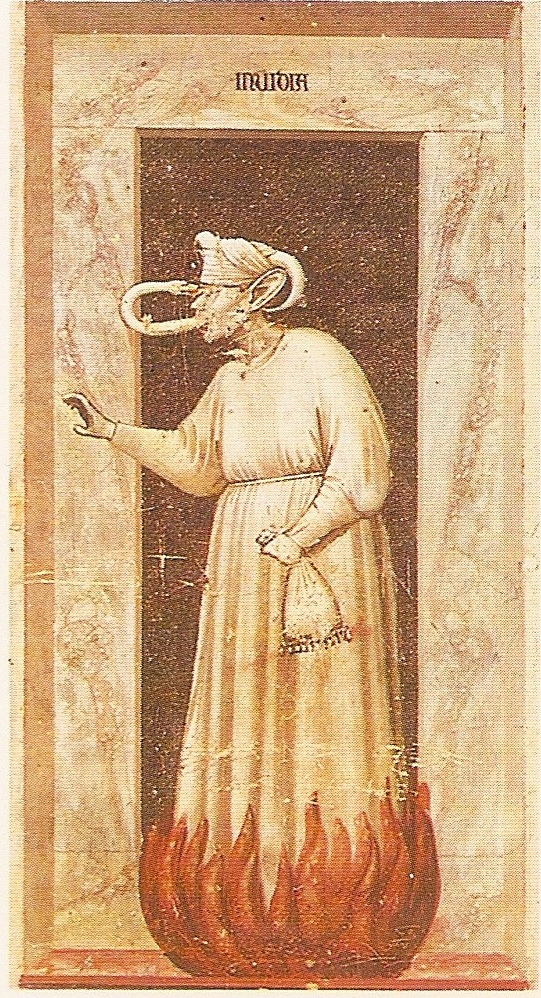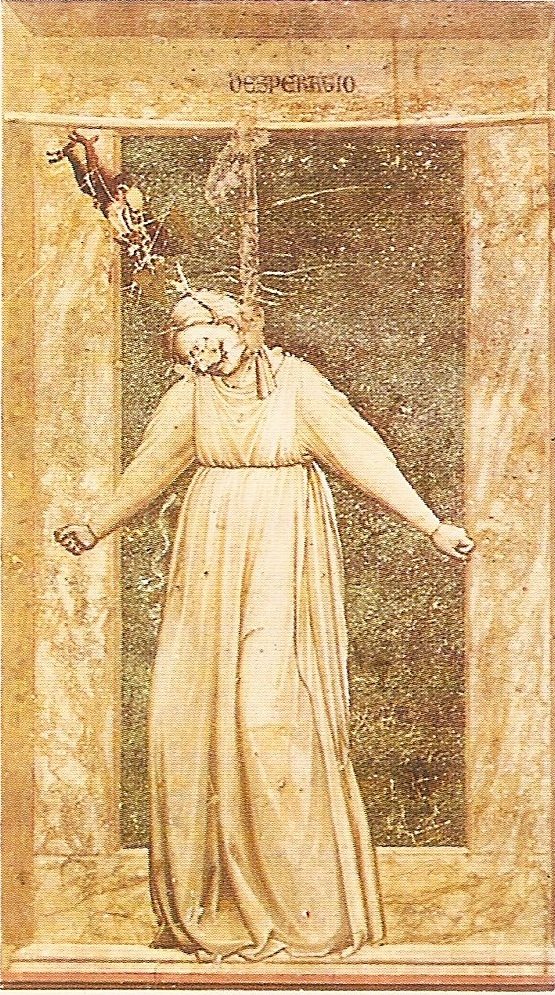‘Οὐ μὲν οὖν τῇ ἀληθείᾳ, φάναι, ὦ φιλούμενε Ἀγάθων, δύνασαι ἀντιλέγειν, ἐπεὶ Σωκράτει γε οὐδὲν χαλεπόν’.
“No, it is Truth, my dear Agathon, that you cannot contradict; Socrates you easily may”
Plato ‘Symposium’ 201D
Epictetus in the field of ‘proairetic things’ and Einstein in the field of ‘aproairetic things’ point to the existence of an ‘absolute’ to which everytingh else is ‘relative’.
Let’s have a look at the facts.
It is empirically evident that every human being really existent is such thanks to his natural possession of the ‘proairesis’. It is also empirically evident that the universe in which we live has a structure -that we can call the ‘nature of things’- defined at the highest possible level of generalization by only two sets of things. The first set is the set containing everything that is ‘aproairetic’ i.e. what is not in the exclusive power of the human ‘proairesis’. The second set is the set containing everything that is ‘proairetic’, namely that is in the exclusive power of human ‘proairesis’.
The ‘proairesis’ can be defined in a rigorous way as the human faculty able to take a ‘diairetic’ or a ‘counterdiairetic’ attitude. ‘Proairesis’ is by nature free, infinite, impossible to enslave and impossible to subordinate. It takes a ‘diairetic’ attitude when it operates the ‘diairesis’, that is the distinction between what is in its exclusive power, i.e. that is ‘proairetic’, and what is not in its exclusive power, i.e. that is ‘aproairetic’. Conversely, it takes a ‘counterdiairetic’ attitude when it does not operate the ‘diairesis’, and consequently aberrs by decreeing ‘proairetic’ what is ‘aproairetic’ or ‘aproairetic’ what is ‘proairetic’.
The ‘nature of things’ and the human ‘proairesis’ are in fact one and the same absolute, invariant, inviolable reality: an empirically valid reality for any human being belonging to any culture. This fact is quite astonishing, and appears to me to be the legitimate equivalent at the ‘proairetic’ level of the absolute, invariant, inviolable reality empirically valid for any observer represented in the physical world -that is in the set of ‘aproairetic’ things- by the speed of light.
Since it is empirically true that any man finds beautiful, happy and good to get what he wants, and judges ugly, unhappy and bad to run into what he averts, the ‘happiness’ and the ‘unhappiness’ of any man is strictly correlated with the ‘diairetic’ or ‘counterdiairetic’ attitude of his proairesis.
This means that the only happy man is the man whose proairesis respects its nature, who recognizes the ‘nature of things’ and accordingly treats what is ‘proairetic’, led by the judgment that the outcome of the operation is in his exclusive power and thus obtains what he wants; and interacts with what is ‘aproairetic’ led by the judgment that the outcome of the operation is not in his exclusive power, and therefore with the due reserve so as not run into self-failure and distress.
It is evident that, on the contrary, the man whose proairesis does not respect its nature and who tries to violate the nature of things will be unhappy, because he is treating what is ‘proairetic’ as if it were not in his exclusive power, and what is ‘aproairetic’ as if it were instead in his exclusive power.
Now, if we try to define the theoretically ‘pure’ types of all possible human behaviors based on the previous empirically true assumptions, it will be sufficient to examine all possible human behaviors with respect to what is ‘proairetic’ (for example, the project of walking) and simultaneously with respect to what is ‘aproairetic’ (for example, to take an actual walk). The examination of both aspects is paramount, as happiness is the result of a combination of two factors which must both be in accordance with the nature of things. Otherwise happiness will sooner or later become unhappiness, when even just one of the two factors is in a state contrary to the nature of things.
We find, then, with some surprise, that this research is not only feasible but also rather simple, since the ‘pure’ types of all human possible behaviors are in theory only four in number, as can be clearly seen in the following diagram.
In it:
the ” + ” sign is equivalent to the human behavior resulting from the judgment: ‘it is in my exclusive power’
the ” – ” sign is equivalent to the human behavior resulting from the judgment: ‘it is not in my exclusive power’
1. PROAIRETIC / APROAIRETIC + / + > unhappiness (i.e. vice)

2. PROAIRETIC / APROAIRETIC – / + > unhappiness (i.e. vice)

3. PROAIRETIC / APROAIRETIC – / – > unhappiness (i.e. vice)

4. PROAIRETIC / APROAIRETIC + / – > happiness (i.e. virtue)

The type 1. man is guided by the judgment that ‘everything is in my exclusive power’. Although his relationship with what is proairetic is correct, his relationship with what is aproairetic is incorrect. Inevitably, sooner or later, the nature of things will make him run into what he averts, with the inevitable misery that will follow. We could point to this type of man, and to many other similar types, as representing the model of the ‘tyrannical man’.
The type 2. man is driven by the judgment that what is proairetic is not in his exclusive power, while what is aproairetic is in his exclusive power. This is the type exactly symmetrical and contrary to the fourth one, and depicts a man prey to continuous unhappiness, a man who systematically doesn’t get what he wants and runs into what he averts. I would point to this man, and to many other similar types, as the model of the ‘politician’ or the ‘fool’.
The type 3. man is the man who lives led by the judgment that ‘nothing is in my exclusive power’. Although his relationship with what is aproairetic is correct, his relationship with what is proairetic is incorrect. This is the type exactly symmetrical and contrary to the first one. The misery of this fellow is as deep as difficult to delineate. I would characterize him, as many other similar types of men, as the model of ‘self-destructive depression’.
The type 4. man is driven by the judgment that what is proairetic is indeed in his exclusive power, while what is aproairetic is not in his exclusive power. This is the type exactly symmetrical and contrary to the second one. This man lives in happiness, because he has the correct attitude both towards what is proairetic and towards what is aproairetic. I would greet him as the model of the ‘wise man’.
Now, the natural asymmetry that we have discovered in this way is a consequence of the nature of things and of the natural characteristics of human proairesis. The asymmetry consists in the fact that, by definition, one type only of man, namely the ‘wise’ one, has an harmonious and happy life, while the three other types must be associated with a troubled and unhappy life.
This means that in the absence of additional limiting factors and statistically speaking, unhappiness wins the game against happiness by 3 to 1.
The same result can be obtained by composing a 4×2 matrix in which we give:
the value ” 1 ” to human behavior resulting from the judgment: ‘it is in my exclusive power’ and
the value ” 0 ” to human behavior resulting from the judgment: ‘it is not in my exclusive power’.
The matrix would look like this:
PROAIRETIC APROAIRETIC
1 1 2 > unhappiness (i.e. vice)
0 1 1 > unhappiness (i.e. vice)
0 0 0 > unhappiness (i.e. vice)
1 0 1 > happiness (i.e. virtue)
and the result is again 3 to 1.
This also means that, disregarding all other parameters and reasoning upon purely theoretical grounds, it is to be expected that 75% of human beings have troubled and unhappy lives, while only 25% of them are expected to have harmonious and happy lives. It seems therefore correct to conclude that, in the very long run, unhappiness wins the match against happiness by a score of 3 to 1, but also that the door to happiness is open, even if it is three times smaller than the door to unhappiness.
This conclusion does not exclude, however, that in the short term there might be, due to a variety of factors, large fluctuations and deviations from the mean, so that at certain stages of human history virtue could prevail over vice significantly, to 75% or even 95%. After all we know that a football game that is inevitably bound to end with the defeat of happiness 3 to 1 can always see its temporary victory for 1 to 0 until a few minutes before the end of the match.